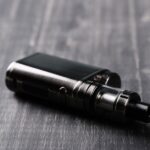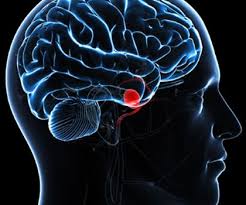Who doesn’t want a sound sleep at night? A well-rested night defines the productivity of the day that follows. It makes people feel energetic, alert, and creative in everyday activities. However, unfortunately, many people around the world do not have the privilege of a peaceful night’s sleep. 90 million Americans snore while sleeping, and half of them are diagnosed with Obstructive Sleep Apnea.
This blog will take a closer look at the sleep quality of OSA patients before and after using a CPAP machine.
Obstructive sleep apnea is the most common form of sleep apnea in which the sufferer’s sleep is disrupted due to breathing problems. The air tract and throat undergo blockage due to muscular relaxation, causing a hindered flow of air. This leads to snoring as the person tries to keep up with the breathing pattern. This disturbance in breathing lowers the oxygen levels in the blood, signaling the brain to wake the person up.
Many patients with obstructive sleep apnea encounter multiple episodes of interrupted breathing every time they fall asleep. It lowers the overall quality of their life due to lack of energy and focus during the day.
Symptoms of Obstructive Sleep Apnea
Although the symptoms vary according to the person and the condition’s severity, these are some general ones:
- Snoring loudly
- Waking up at regular intervals during sleep
- Gasping to access more air
- Taking frequent day-time naps
- Having a dry mouth
- Getting headaches throughout the day
Introduction to the CPAP machine
CPAP is one of the most customary forms of positive air pressure machines. It works by providing ‘continuous’ air pressure to OSA patients, expanding the airway and lowering its obstruction. Either the air travels through the nose alone or via the mouth and nose simultaneously. The parts of a CPAP machine are as follows:
- A mask that covers the nose and/or the mouth. This mask can be of different types, i.e., nasal mask, full mask, nasal pillow mask, and hybrid mask, depending on where and how it is adjusted.
- Straps to secure the mask on a person’s face
- A pipe that bridges the mask with the motor
- A motor that produces air pressure and blows it in the mask
- A filter that ensures the purity of air
- Some machines come with other advanced features like pressure controllers, air temperature regulators, and humidifiers
Some other types of PAP machines
- Bi-level PAP machine: This device operates with two distinct pressure levels: a higher pressure during inhalation and a lower pressure during exhalation.
- Auto bi-level PAP machine: It automatically manages the pressures of inhalation and exhalation.
- Auto CPAP machine: This apparatus autonomously adjusts itself, employing various pressure levels to maintain the openness of airways.
- Adaptive Servo-ventilation machine: This machine is designed for individuals experiencing specific forms of central sleep apnea. This device continuously monitors the user’s breathing patterns and modifies the air pressure to enhance respiratory stability. Additionally, it can also provide breathing aid when required.
How does the CPAP machine improve the sleep quality of Sleep Apnea patients
Luckily, a CPAP machine can resolve the main complication in OSA patients, an obstructed airway. The regular air pressure delivered by the machine keeps the tongue, palate, throat, and air tract in reasonable positions. This prevents excessive muscular tension that causes discontinuity of breathing patterns.
According to The Library of National Medicine, Consistent use of a CPAP machine can enhance the overall sleep quality of sleep apnea patients in the following ways:
- Regulated breathing
By keeping the air tract broad and unobstructed, a CPAP machine ensures an optimal amount of air enters the body. This helps regulate oxygen levels in the body and eliminates the need to wake up to breathe properly. Due to this, an apnea patient can maintain good-quality sleep.
- Less snoring
When there is a lower obstruction in the air tract, there is automatically less snoring. This implies that the ratio of waking up to loud snorting sounds is drastically decreased. In some cases, patients reported that their snoring was fully rectified after using a CPAP machine.
- Lower daytime sleepiness
Sleeping peacefully at night means that a person feels more alert and fresher during the day. Consequently, there are fewer daytime naps. Research indicates that approximately 75% of individuals utilizing CPAP therapy for obstructive sleep apnea experience a resolution of their daytime sleepiness symptoms. The therapy’s effectiveness may be influenced by the duration of CPAP usage and the severity of daytime sleepiness.
- Enhanced mood
Preliminary findings suggest that users of CPAP may benefit from improvements in performance, memory, and concentration. All these factors contribute to an overall improvement in the mood. As a result, this enhanced mood in turn leads to enhanced sleep quality.
Some side effects of CPAP
Some potential side effects associated with CPAP therapy may encompass:
- Nasal congestion
- Rhinorrhea (runny nose)
- Xerostomia (dry mouth)
- Epistaxis (nosebleeds)
These adverse effects generally arise from exposure to cold, dry air. But the utilization of a heated humidifier can frequently alleviate these symptoms.
Additionally, CPAP masks or straps may sometimes lead to skin irritation or redness. However, selecting an appropriately sized mask and employing padding can significantly reduce these concerns. It is advisable to consult your healthcare provider if you experience any troublesome side effects.
What other measures can be taken to treat Obstructive Sleep Apnea
- Oral devices can be installed in the patients to keep the mouth and jaw reasonably positioned.
- Some individuals suffering from obstructive sleep apnea do not find relief through alternative treatments. Therefore, they may experience improvements through surgical intervention. Potential surgical options encompass the excision of tonsils or surplus throat tissue, realignment of the jaw, and the elimination of nasal blockages.
- Improving the sleeping environment is also of great benefit when it comes to sleeping disorder. Choose a comfortable sleeping position, and a dark, serene atmosphere before falling asleep.
- Making a few lifestyle changes such as avoiding alcohol or sedatives, taking a healthy diet, and exercising also help in controlling sleep apnea.
- Losing weight can also do wonders for OSA patients because fat deposits in obese people are the primary cause of airway obstruction.
- In-house sleep study is a beneficial treatment strategy for patients of all sleeping disorders.
Conclusion
Obstructive Sleep Apnea is a troublesome medical condition that significantly hinders the quality of life in its patients. CPAP machines offer an effective cure for such people, by regulating the airway mechanism. It keeps the tract open and promotes sufficient air flow to reduce breathing ailments during sleep. Studies have shown that consistent use of CPAP resulted in less snoring, lower daytime fatigue, and overall improvement in sleep quality.












